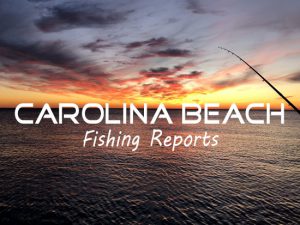BLACK SEA BASS – Centropristis striata

Family Serranidae, SEA BASSES AND GROUPER Description: basic color dark brown or black; dorsal fin has rows and stripes of white on black; large males have iridescent blue and ebony markings, and fatty hump in front of dorsal fin; females may have indistinct vertical barrings; topmost ray of caudal fin much elongated in adults; caudal […]
BANK SEA BASS – Centropristis ocyurus

Family Serranidae, SEA BASSES AND GROUPER Description: pale olive or brassy-brown in color with indistinct black blotches that form vertical barrings (the blotch above pectoral fin darker); wavy blue lines on head lips purplish-blue; caudal fin tri-lobed on adults; edge of nape unscaled. Similar fish: rock sea bass, C. philadelphica; other Centropristis. Where found: OFFSHORE […]
TARPON SNOOK – Centropomus pectinatus

Family Centropomidae, SNOOKS Description: only snook with 7 anal fin rays (others have 6); lower jaw curves upward; compressed body; prominent black lateral line extends through tail; tips of pelvic fins reach beyond anus. Similar fish: other Centropomus. Where found: INSHORE; requently in fresh water. Size: usually less than 1 pound (12 inches). Remarks: maximum […]
SWORDSPINE SNOOK – Centropomus ensiferus

Family Centropomidae, SNOOKS Description: smallest of the snooks; profile slightly concave; prominent lateral line outlined in black (not solid), extends through caudal fin; color yellowgreen to brown-green above, silvery below; giant second anal spine, hence the name; largest scales of all snook. Similar fish: other Centropomus. Where found: occurs in INSHORE estuarine habitats from south […]
COMMON SNOOK – Centropomus undecimalis

Family Centropomidae, SNOOKS Description: distinct black lateral line; high, divided dorsal fin; sloping forehead; large mouth, protruding lower jaw; grows much larger than other snooks; pelvic fin yellow. Similar fish: other Centropomus. Where found: from central Florida south, usually INSHORE in coastal and brackish waters, along mangrove shorelines, seawalls, and bridges; also on reefs and […]
FAT SNOOK – Centropomus parallelus

Family Centropomidae, SNOOKS Description: deeper body than other snooks; yellow-brown to greenbrown above silvery on sides; black lateral line extends onto tail; mouth reaches to or beyond center of eyes; usually no dusky outer edge of all snook. Similar fish: other Centropomus. Where found: INSHORE species found in mangrove habitat; found commonly in fresh water; […]
BALLYHOO – Hemiramphus brasiliensis

Family Exocoetidae, FLYING FISHES Description: tip of lower jaw and upper lobe of caudal fin orange-red; pectoral fin short; tip of pelvic fin extends past beginning of dorsal fin; dorsal and anal fins unscaled. Where found: young are pelagic; adults abundant in bays and nearshore waters, near reefs Size: up to 16″ Mark MayoI research […]
YELLOWFIN MENHADEN – Brevoortia smithi

Family Clupeidae, HERRINGS Description: silvery, with a greenish or bluish back; fins golden yellow; a single dark shoulder spot; scales on back noticeably smaller than those on sides and difficult to count – about 60-70 rows across middle of side; 27-30 (usually 28-29) ventral scutes. Size: to 32 cm (13 in.). Mark MayoI research and […]
GULF MENHADEN – Brevoortia patronus

Family Clupeidae, HERRINGS Other local names: shad, pogies Description: to 18″ oval, deep and compressed; blue or green, sometimes bluish-brown above; sides and belly silvery, fins yellowish; distinct humeral spot often followed by several rows of smaller spots; head very large, exposed margin of scales almost vertical, fringed. Where found: large, near surface schools primarily […]
SPANISH SARDINE – Sardinella aurita

Family Clupeidae, HERRINGS Description: back bluish gray, sometimes greenish; sides silvery to brassy; slender body. Where found: in schools ranging from N. Gulf of Mexico to Brazil Size: up to 10″ Remarks: an abundant fish, representing a resource so far only utilized locally. Mark MayoI research and report on fishing, fishing gear/equipment, survival topics, and […]
